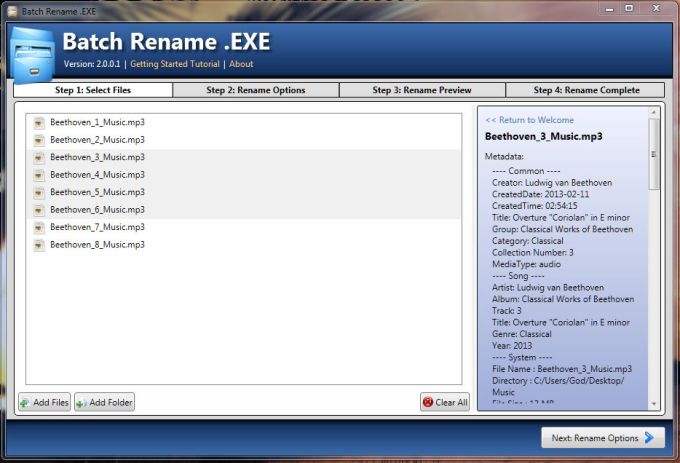

The Bulk Rename Utility is a paltry 1MB download, while Light Image Resizer checks in at only 8.4MB. You can also download and use both the Bulk Rename Utility and Light Image Resizer for free for non-commercial use, which is another plus. The Bulk Rename Utility and Light Image Resizer are both easy to use and offer a plethora of customizations options. Os.rename(point, os.path.join(point, point + '.There are a multitude of batch file renaming and batch image processing utilities currently available, but we like a couple in particular. P_layer = project.mapLayersByName(p_layer_name) P_layer_name = '' # put inside the quotes the name of the joined layer Paste the following python script in the QGIS python console and remember to set the joined layer name. To rename this photos I will use a simple script in python. Now we have a table containing the path to the photo and the new name.Replace Polygon with the name of the field that was joined from the polygons layer. To do this, open the field calculator in the joined layer and calculate a new string field (please name it New_name for simplicity) and paste this expression: format('%1_%2', So it will be necessary to create an Id that will be joined with the value of the field from the polygon. There's a problem, when more than one image has been taken in the same polygon they will have the same value in the field that will be used to rename them. Now you have a table with some properties of the photos (one of this the path) and the polygon to which it belongs. Where New scratch layer is the polygon layer and in Fields to add you must set the field that contains the new name (in my screenshot is empty because i had only one field). There are meany ways to do this, but the easiest maybe is to use the Join attributes by location tool. Generate points geometries for every geotagged photo with the Import geotagged photos tool.Īdd the attribute (that will be used to rename the photo) of the polygon to the point.

Note: make a copy of your photos for security


 0 kommentar(er)
0 kommentar(er)
